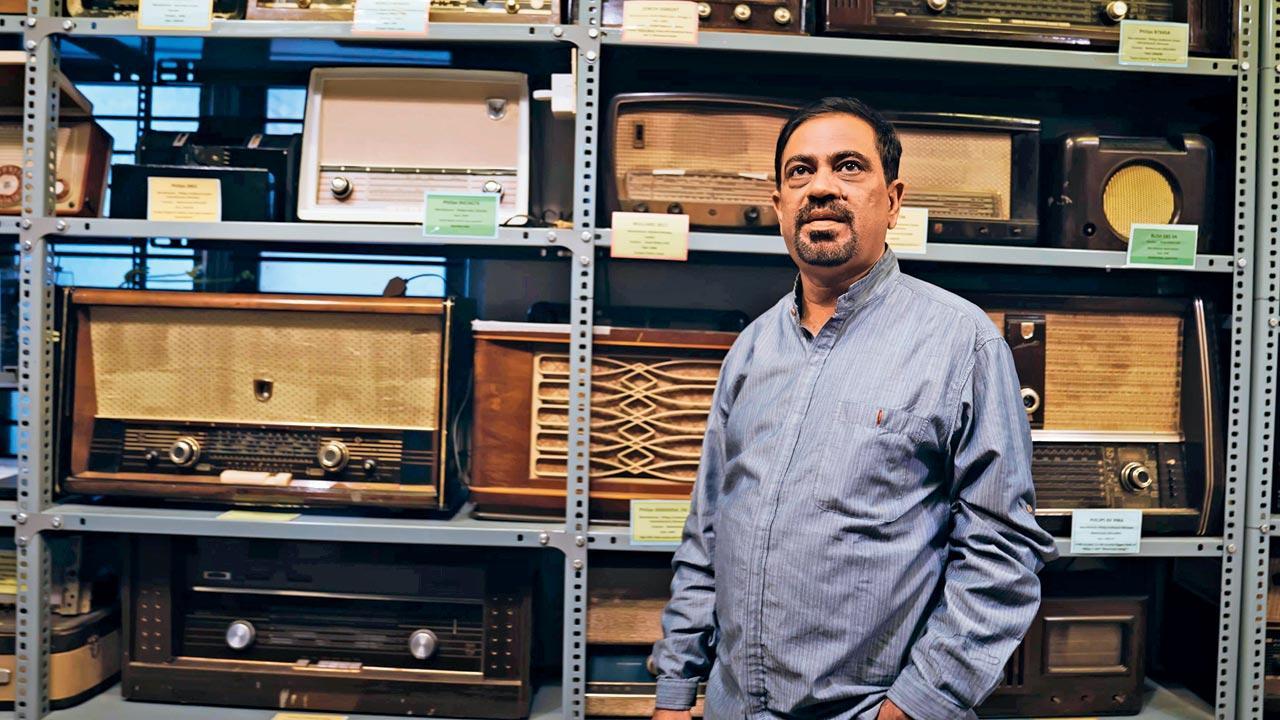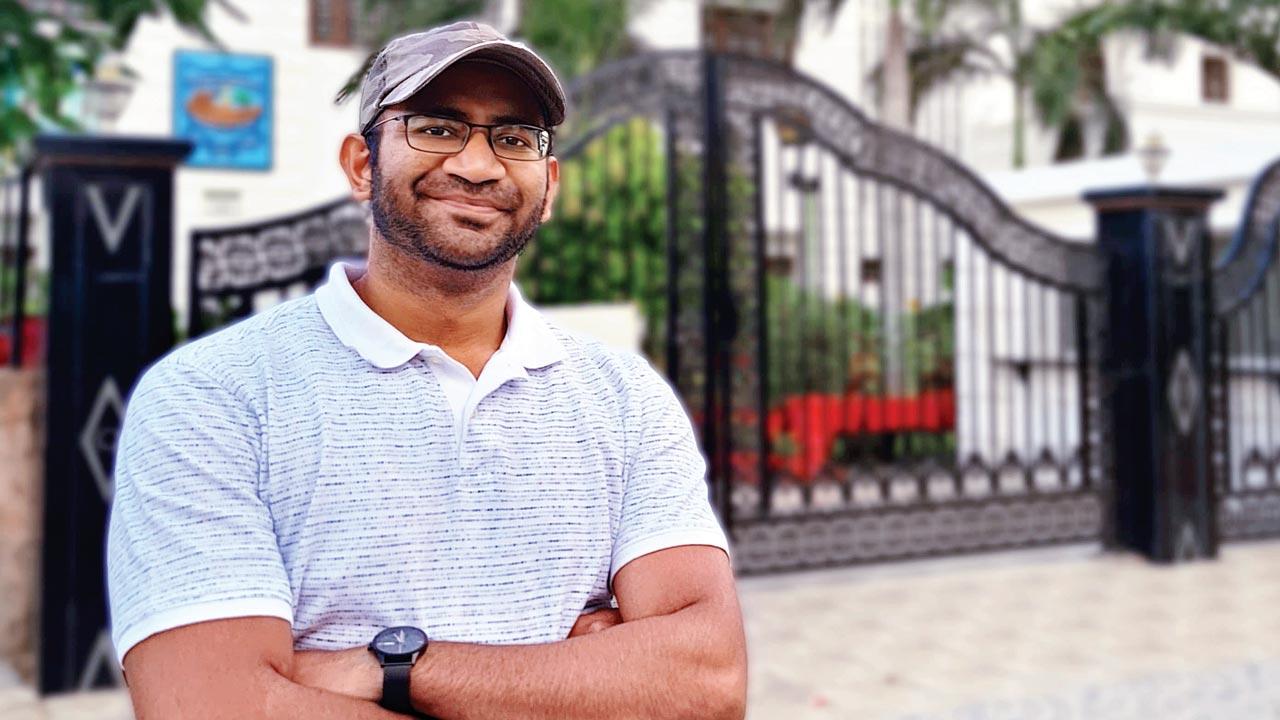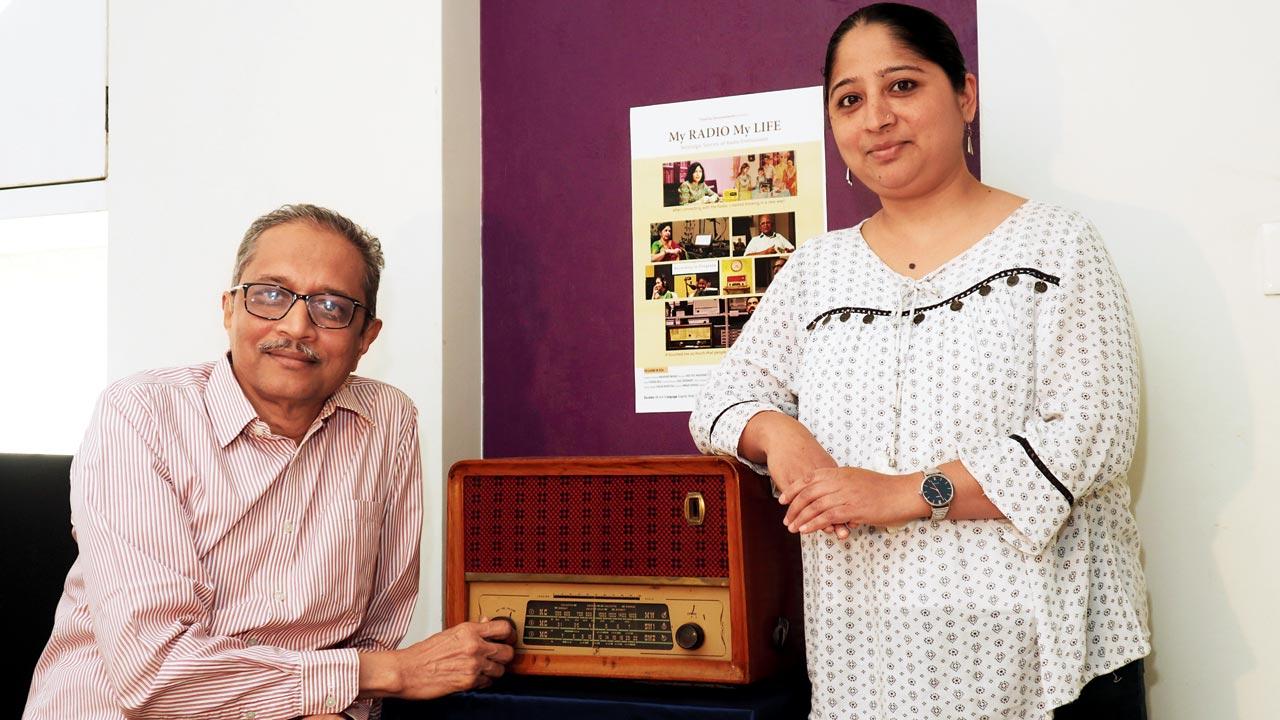It may be a relic of the past, but ahead of World Radio Day, a new documentary unlocks memories of men and women for whom the box was a reason to live

Uday Kalburgi’s fascination for the radio started at age 7. He now runs a radio museum in Bengaluru
Librarian Vijay Deodhar’s radio has shut shop. The Pune resident calls one technician after another, disappointed each time they tell him that they have moved on; they don’t repair radios anymore.
ADVERTISEMENT
It’s a fitting way to start My Radio My Life, a film by Pune-based TimeCap Documentaries, which as its co-founder, and the film’s director-producer Makarand Waikar, says, was launched during the pandemic to document “traditions and habits that are going to vanish soon”.
 Bharathi Prasad runs an HAM radio (amateur radio) from New Delhi, and is connected with radio HAMs in almost every country of the world
Bharathi Prasad runs an HAM radio (amateur radio) from New Delhi, and is connected with radio HAMs in almost every country of the world
It’s also perfectly timed as World Radio Day is set to be celebrated on February 13. The day was announced in 2011 by the Member States of The United Nations Educational, Scientific and Cultural Organization (UNESCO) and adopted by the UN General Assembly in 2012 as a UN International Day. “Radio, as a technology, science, means of communications and system of programming audio elements has roots all the way back to the 1800s… so it can be safely said that the medium is already well into its second century,” says the UNESCO site, and this year’s theme is A Century of Informing, Entertaining, and Educating.
Waikar’s documentary is a collection of nostalgic stories of radio enthusiasts, features restorers, announcers, and of course, listeners. The treatment is one that focuses on a slow life, accentuated by memories shared by men and women who saw the radio as a friend. You’ll see shots of rainy mornings, sleepy afternoons and of times when less was more. “It [the film] will work as a time capsule. Tomorrow, you may see the radio in a museum, but all the people connected with it won’t be around. That’s why this documentary is important to have made; it can exist as part of archives all over the world, because the radio affected the lives of so many people,” he tells mid-day.
 Bidit Roy
Bidit Roy
Along with co-founder Simantinee Bhagwat, and co-director Bidit Roy, Waikar began research in 2021 by looking for people associated with the radio, a practical communications system developed by Guglielmo Marconi in 1894–1895. It was from 1920 to 1945 that the radio developed into the first electronic mass medium. It arrived in India in 1922, and a group of hobbyists in Mumbai launched the first radio station. The Bombay Presidency Radio Club was followed by the Calcutta Radio Club in November 1923, and Madras Radio Club, founded in 1924, all amateur efforts. The then British government set up the Indian Broadcasting Service in 1930, later called All India Radio, and given Akashvani moniker in 1957.
“Radio was a big part of my childhood. My grandfather was crazy about it. I got attached to it, and was fascinated by this relationship between radio and humans—this box was affecting their life decisions!” says Roy. Bhagwat, on the other band, was busy narrowing in on the main characters, and after sifting, She zeroed in on six from 25. “I read articles, blogs, and attended Radio Day functions… their passion for the radio had to be paramount [for them to make it to the film].”
 Makarand Waikar and Simantinee Bhagwat started documenting stories of radio lovers during the pandemic. Pic/M Fahim
Makarand Waikar and Simantinee Bhagwat started documenting stories of radio lovers during the pandemic. Pic/M Fahim
For Waikar, honouring the radio was also a personal goal. “I had listened to news of Apollo 11 landing on moon, on the radio. There was such euphoria! That commentary in English influenced me so much that I was drawn to studying science, got into IIT and became a chemical engineer,” says Waikar, adding that his job in Mumbai made him a fan of this newspaper, which he’d read start to finish every afternoon over lunch. “I could have become a documentary maker back then too, but it’s okay, this is my second life.”
Ask the team who their favourite character from the film is, and all of pick Uday Kalburgi unanimously. The radio restorer is behind Bengaluru’s Short Wave Radio Museum. “He is restoring a radio from 1920, so that it’s in the same shape as it was then!” exclaims Bhagwat. Roy chimes in, “It is his life’s mission. All those radios would have become scrap. And he does this single handedly. That moved me. The restoration journey is a solo one. Documentary filmmakers are also like that, fighting the forces. Uday has that fire.”
 An award-winning radio announcer, Mamta Singh, is known as Radio Sakhi
An award-winning radio announcer, Mamta Singh, is known as Radio Sakhi
Kalburgi is sure to win over the viewer as well. His training ground, he says in the film, was a radio shop in Nipani, which he stood outside every day as a seven-year-old, to figure out exactly what the radio did. “Radios just keep coming to me [through my life], and I want to keep them alive for the next generation,” he says.
Waikar draws our attention to a time when families were united by the radio, gathering around it in the evenings to hear the news, music, or audio plays. “It was a family’s only source of entertainment. It generated discussion. Unlike social media and phones, which consume you and all your attention, radio was a companion. It was a respected friend, who kept a distance, so that you could do other things as you listened to it.”
After countless mentions at international film festivals, the film is readying to make its India debut as Waikar hopes for a video on demand release. All its makers want is for people to remember the radio. “It’s a testament to how small things affected our life. And life is cyclical, so who knows, this may all come back again,” says a hopeful Roy.
 Subscribe today by clicking the link and stay updated with the latest news!" Click here!
Subscribe today by clicking the link and stay updated with the latest news!" Click here!







